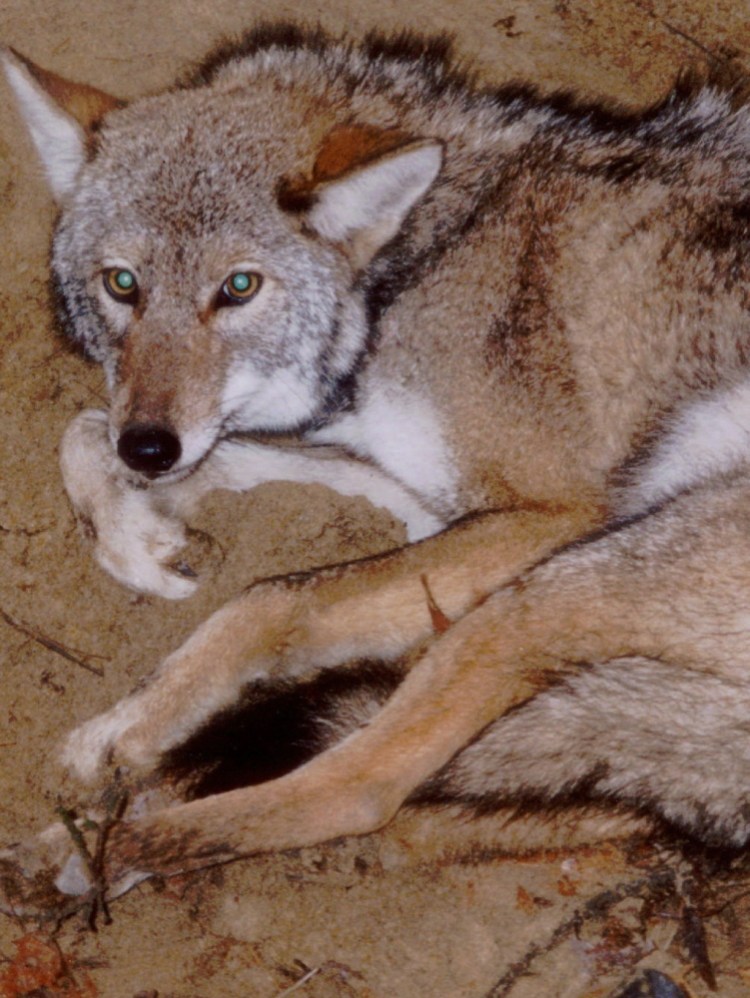SOUTH CHINA — Maine has no coyotes. The wolf-like canid that ranges from Ohio to the Carolinas and northeast to Newfoundland and Labrador is not a coyote, but a hybrid of the coyote, wolf and domestic dog.
The animal we call coyote is more aptly named “coywolf.” Coywolves were first documented in Canada in the early 20th century; they reached Maine by the 1930s. The L.C. Bates Museum in Hinckley contains a strange-looking specimen purported to be a wolf killed in Calais around 1910.
That Maine’s coywolves are hybrids of coyotes and wolves is nothing new. In a recent article (“Maine coyotes getting bigger, more wolflike,” May 7), Deirdre Fleming sensationalizes and demonizes an animal that scientists have known about and studied for decades.
These hybrids are more wolf-like than coyotes and more coyote-like than wolves. They can and do take down deer, but they are also scavengers. A study of deer carcasses conducted by researchers at the State University of New York College of Environmental Science and Forestry showed that just 8 percent of the adult deer on which coywolves were feeding in winter “had been killed conclusively” by coywolves.
Coywolves are native to Maine and are not an invasive species. Their existence is the result of natural immigration and filling a void in the ecosystem created when humans exterminated wolves, and they are now an integral part of our ecosystem.
LACK OF SCIENTIFIC EVIDENCE
In 1985, the Maine Legislature authorized the Maine Department of Inland Fisheries and Wildlife to employ agents to snare purported coyotes. Maine’s misnamed “coyote control program” continues today, despite the lack of any scientific evidence that the program is either reducing coyote numbers or increasing the deer population. The claim that “dead coyotes kill no deer,” while true, is a gross oversimplification of the predator-prey relationship and cannot lead one to conclude that killing coyotes means more deer.
I liken spending public funds on coyote control to flushing money down the toilet. There is no such thing as “coyote control”; in fact, coyotes compensate for nearby coyotes’ deaths by producing larger litters. According to the late retired IFW biologist Henry Hilton, “Maine’s coyote population … has remained unchanged since 1985.”
During the last three winters combined, the state paid its agents over $138,000 to kill 690 purported coyotes, for an average of about $200 per animal. One individual was paid nearly $5,000 and killed no purported coyotes. Maine’s coyote control program is a waste of public monies and may, in fact, have the opposite of the intended effect. It continues to be supported by the Maine Legislature despite a lack of any scientific evidence of its effectiveness.
Maine law allows purported coyotes to be killed year round. There is no legal definition of “coyote” and no mention in statute of the legality of killing coyote-wolf hybrids or coywolves. Therefore, the killing of the animal we call “coyote” is technically illegal.
RECOVERING THEIR TERRITORY
Because coywolves and wolves are very similar in size and appearance, the U.S. Fish and Wildlife Service has the authority to regulate the taking of coywolves. There is growing evidence, in the form of dead wolves from Massachusetts to New Brunswick, that wolves are attempting to recolonize some of the thousands of square miles of potential wolf habitat that remains south of the St. Lawrence River from New York state to Nova Scotia.
This natural recovery is being jeopardized by the virtually unregulated killing of coywolves. By denying the existence of a wolf population south of the St. Lawrence, the Northeastern states and the federal government are hindering a natural wolf recovery contrary to the Endangered Species Act.
Our ecosystem is full of predators, from amoebas to blue whales. All are critical links in the food chain. Without canid predators such as coywolves and wolves, other animals, including deer, moose and beaver, suffer from overpopulation, disease and starvation. Rather than kill predators, we should welcome them. We should learn about their importance and teach our children and each other.
Fish and wildlife management in Maine is still in the dark ages when it comes to the recognition of the importance of predators. It’s time for that to change. It’s time for science and responsible journalism to supplant ignorance and undocumented propaganda.
It’s time to realize that we share this earth with many and varied creatures and that each one has an important role to play in the web of life.
Send questions/comments to the editors.



Success. Please wait for the page to reload. If the page does not reload within 5 seconds, please refresh the page.
Enter your email and password to access comments.
Hi, to comment on stories you must . This profile is in addition to your subscription and website login.
Already have a commenting profile? .
Invalid username/password.
Please check your email to confirm and complete your registration.
Only subscribers are eligible to post comments. Please subscribe or login first for digital access. Here’s why.
Use the form below to reset your password. When you've submitted your account email, we will send an email with a reset code.